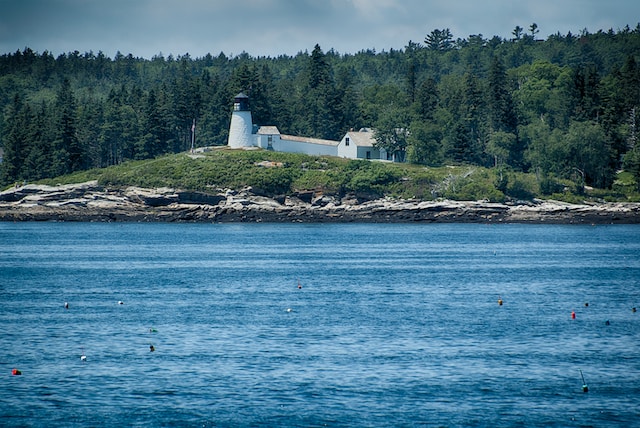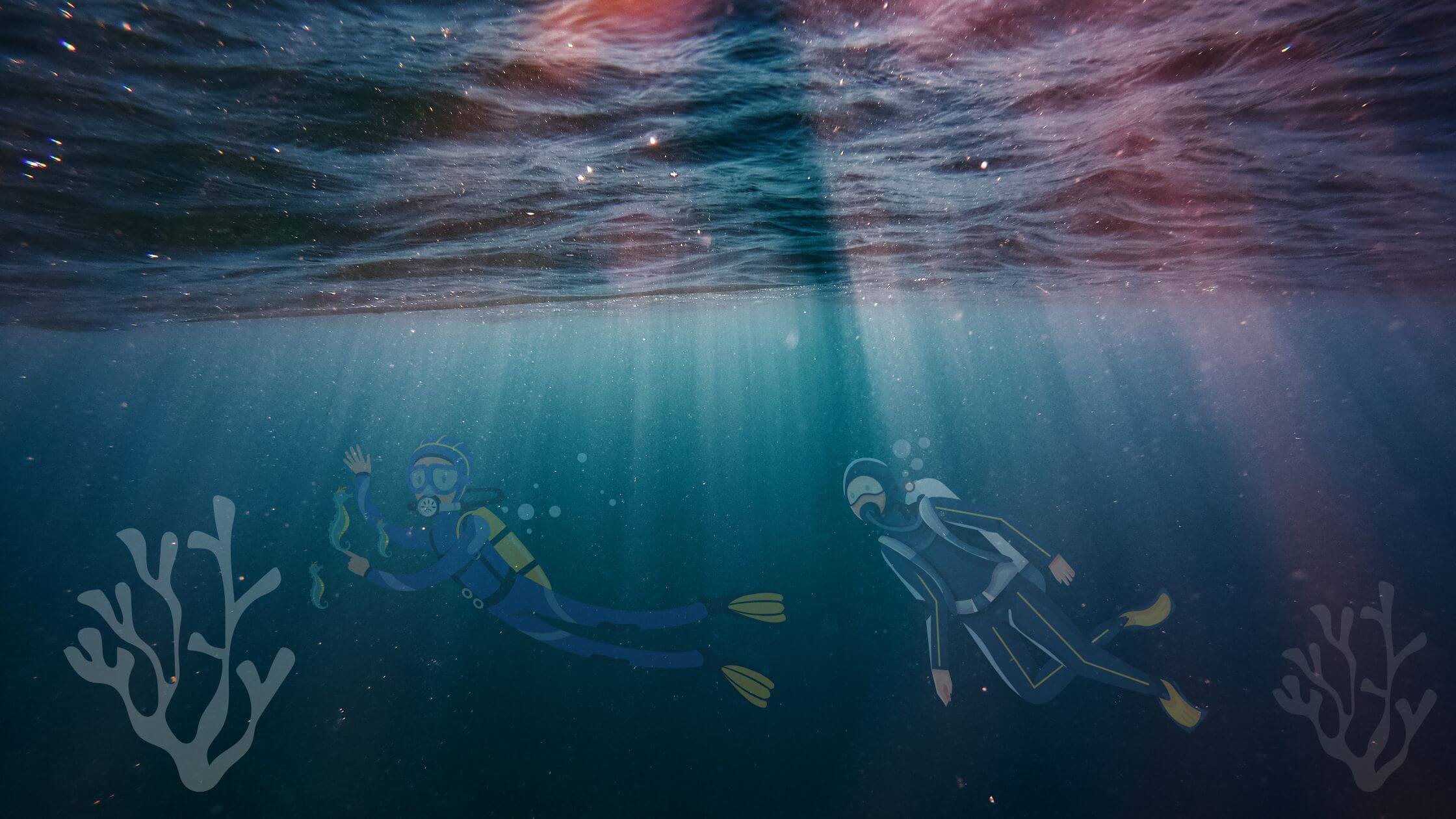High seas conservation is an important and often overlooked component of India’s marine conservation initiatives. High seas are defined as those areas of the ocean beyond any nation’s exclusive economic zone (EEZ) where no single nation has control. India, which has the second-largest coastline in the world, is home to some of the most significant marine ecosystems in the world and has enormous stretches of high seas around its shores. Protecting these areas is essential to maintain the health of India’s oceans and safeguarding its marine biodiversity. The multiple advantages of high seas conservation, the programmes in place to safeguard India’s high seas, and the difficulties in high seas conservation in India will all be covered in this blog.
What is High Seas Conservation?
A division of marine conservation known as high seas conservation is dedicated to safeguarding oceanic regions outside of national borders. It is often referred to as deep-sea conservation or ocean conservation. The goal of high seas conservation is to control and safeguard activities like the exploitation of marine resources, pollution, and the effects of climate change in these regions. All nations have access to and control over the high seas, which means that any country might possibly affect the ecosystem there. To safeguard the health of the ocean and stop additional harm, it is crucial to conserve these places.

The majority of the time, international conventions and accords are used to conserve the high seas. These agreements lay forth the guidelines for high seas activities like resource exploitation and fishing. They also decide how the environment is monitored and how the resources are maintained.
High Seas Conservation in India
Some of the world’s most significant marine ecosystems may be found in India. Many marine species, including corals and other invertebrates as well as fish and mammals, can be found along its extensive shoreline. As a result, high seas conservation is crucial to India’s attempts to save the oceans.
India is a signatory to a variety of international accords, such as the International Maritime Organization’s Code of Conduct for the Protection and Management of Marine Living Resources and the United Nations Convention on the Law of the Sea (UNCLOS) (IMO CCAMLR). These agreements lay forth the guidelines for high seas activities like resource exploitation and fishing.
India is a participant in the International Seabed Authority (ISA), which oversees operations on the deep seafloor. India has a variety of national efforts in place to encourage high seas conservation, including the Coastal Regulatory Zone (CRZ), the National Marine Fisheries Policy, and the National Plan of Action for Conservation and Management of Marine Fisheries (NPOA-CMMF).
Benefits of High Seas Conservation
In order to preserve the condition of India’s oceans and save its marine biodiversity, high seas conservation is crucial. The following are some advantages of high seas conservation:
- Preservation of marine biodiversity: Whales, dolphins, sharks, and sea turtles are just a few of the marine animals that call the high seas home. For the protection of these species and their habitats, these places must be conserved.
- Pollution reduction: Protecting the high seas limits the amount of pollution that ships, oil rigs, and other activities can release into the ocean.
- Sustainable resource management: High seas conservation contributes to the responsible and sustainable management of the ocean’s resources by introducing sustainable fishing techniques.
- Climate change mitigation: Conservation on the high seas helps to reduce the negative consequences of climate change on the ocean, such as acidification and rising sea levels.
The Importance of Safeguarding India’s High Seas
A number of the most significant marine ecosystems in the world may be found in India’s high seas. For India’s oceans to remain healthy and its marine biodiversity to be preserved, these places must be protected. In addition to reducing pollution and unsustainable resource use, high seas conservation also helps to temper the negative consequences of climate change on the ocean.
But even with these advantages, conserving the high seas in India still faces many difficulties. They include a lack of understanding of the significance of protecting the high seas, ineffective governance and enforcement, and a lack of money for conservation efforts.
Challenges to High Seas Conservation in India
India’s efforts to save the high seas confront numerous obstacles, it consists of:
- Lack of knowledge: The public is not sufficiently aware of the significance of protecting the high seas and the dangers that these regions face. As a result, there is little support from the general population for conservation efforts.
- Ineffective governance and enforcement: Conservation efforts do not have enough governance or enforcement. Because of this, it is challenging to effectively regulate maritime operations and safeguard marine biodiversity.
- Funding shortfall: Funding for conservation efforts is inadequate. Effective conservation measures become more challenging to establish and enforce as a result.
- Unsustainable resource exploitation: The health of India’s high seas is being threatened by unsustainable resource extraction. In marine ecosystems, overfishing, illegal fishing, and other unsustainable behaviors can have a big impact.
Initiatives to Promote High Seas Conservation in India
In order to effectively protect India’s high seas, there needs to be a number of initiatives in place. These include:
- Public awareness campaigns: Increasing support for conservation initiatives requires educating the public about the value of protecting the high seas.
- Effective governance and enforcement: To guarantee that conservation initiatives are effectively carried out and enforced, effective governance and enforcement mechanisms must be established.
- Sustainable resource management: The protection of India’s marine ecosystems depends on the implementation of sustainable resource management techniques.
- Research and monitoring: Research and monitoring are crucial for comprehending the dangers to India’s high seas and for creating successful conservation plans.
- International cooperation: Effective management of activities on the high seas requires international cooperation.
How Can Individuals Support High Seas Conservation in India?
Indian high seas conservation can benefit greatly from the support of individuals. Here are a few ways to participate:
- Educate yourself: Discover the significance of protecting the high seas and the dangers facing India’s high seas.
- Raise awareness: Spread the word about the significance of protecting the high seas and the dangers facing India’s marine ecosystems.
- Support initiatives: Initiatives that promote high seas conservation, such as research and monitoring programs, should be supported.
- Speak up: Demand that governments take action to protect the high seas.
- Choose sustainable seafood: Avoid purchasing fish that has been illegally caught and opt instead for sustainable seafood.
High Seas Conservation Case Studies in India
Numerous case studies illustrate the significance of high seas conservation for India. The most notable ones are listed below:
- The Andaman and Nicobar Islands: Dolphins, whales, turtles, corals, and other marine animals can all be found in the Andaman and Nicobar Islands. A variety of distinctive ecosystems, including mangroves and seagrass beds, can be found on the islands. To safeguard these regions and the marine biodiversity they support, high seas conservation is crucial.
- The Gulf of Mannar: Dolphins, whales, sharks, and sea turtles are just a few of the numerous marine species that call the Gulf of Mannar home. Additionally, critically endangered species like the dugong depend on it as a vital habitat. Conservation of the high seas is crucial to preserving this distinctive ecosystem.
- The Lakshadweep Islands: The Lakshadweep Islands are home to a wide variety of marine species, including dolphins, whales, and sea turtles. The islands are also home to several distinctive seagrass beds and coral reefs. To safeguard these regions and the marine biodiversity they support, high seas conservation is crucial.
The Future of High Seas Conservation in India
For India to preserve its marine ecosystems and marine biodiversity, high seas conservation is crucial. However, conserving the high seas in India still faces many difficulties. Lack of knowledge, poor governance, lack of enforcement, and a lack of funding for conservation efforts are a few of these.
There must be a concerted effort to increase public awareness as well as to put in place efficient governance and enforcement mechanisms in order to effectively protect India’s high seas. Funding for conservation initiatives, research, and monitoring programs also needs to be increased. India can safeguard the health of its high seas and its marine biodiversity for future generations by putting these measures in place.
Conclusion
For India to preserve its marine ecosystems and marine biodiversity, high seas conservation is crucial. Additionally, it is crucial for lowering pollution and unsustainable resource exploitation as well as for minimizing the negative effects of climate change on the ocean. India has a number of programs in place to encourage the conservation of the high seas, including public awareness campaigns, efficient governance, and enforcement mechanisms. The conservation of the high seas in India still faces numerous obstacles, such as a lack of awareness and insufficient funding for conservation efforts. In order to safeguard India’s high seas and maintain the health of its marine ecosystems for future generations, these issues must be resolved.

